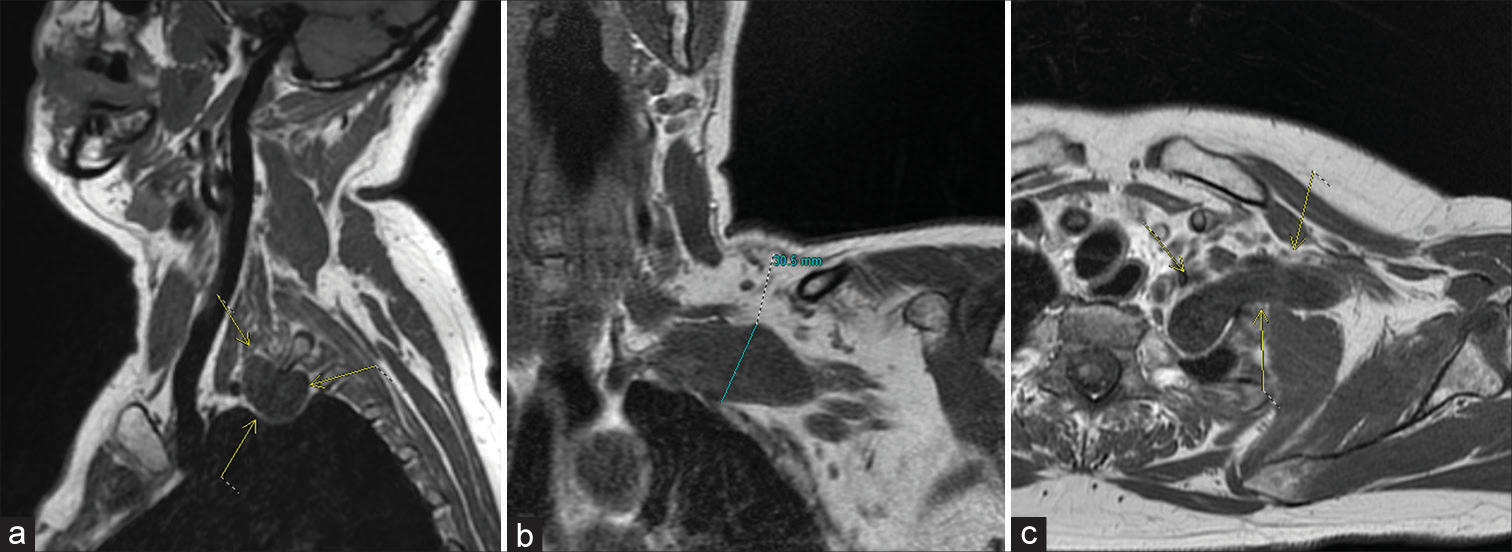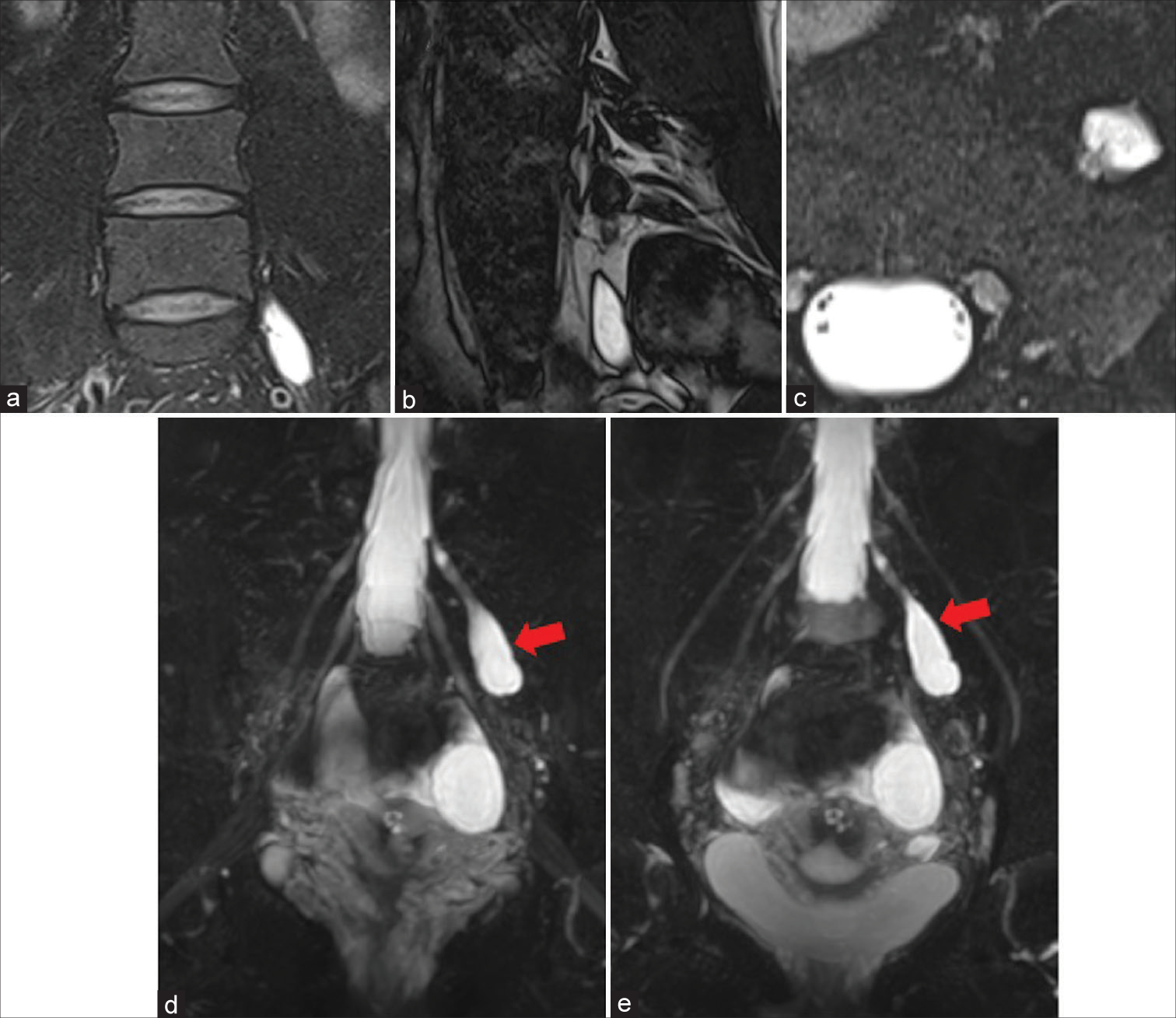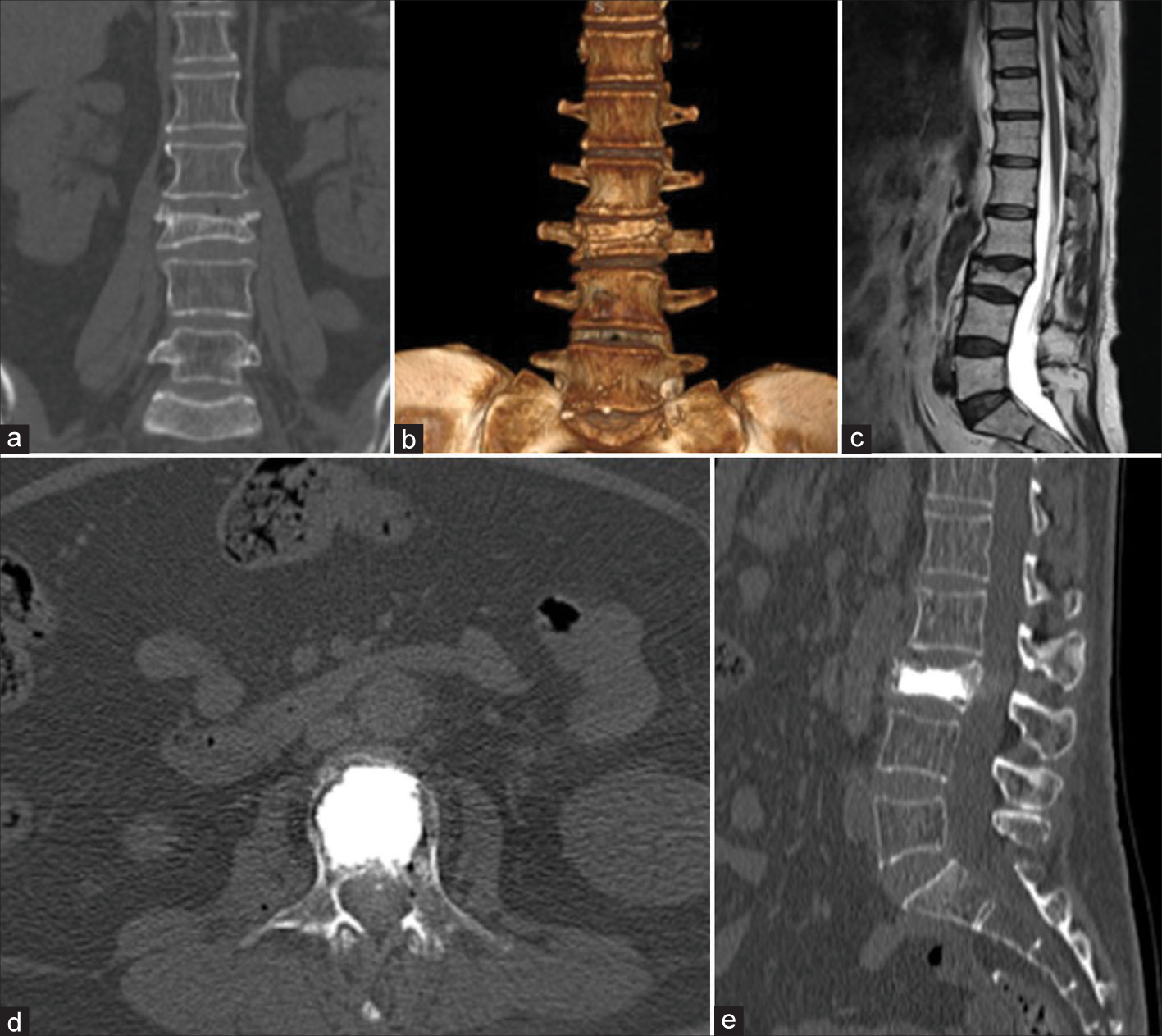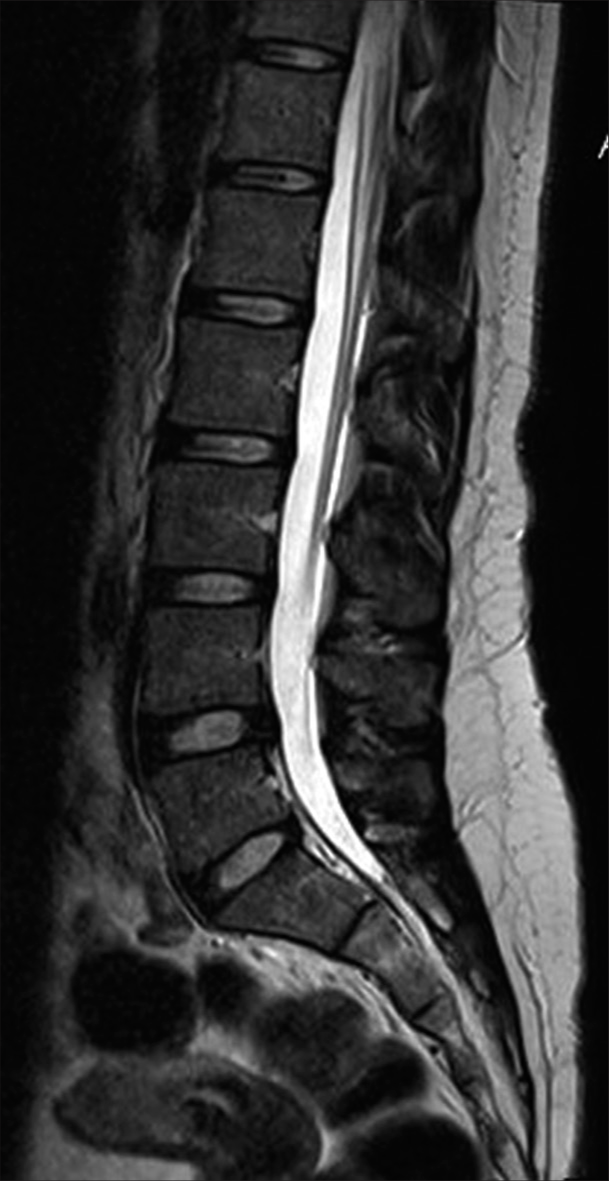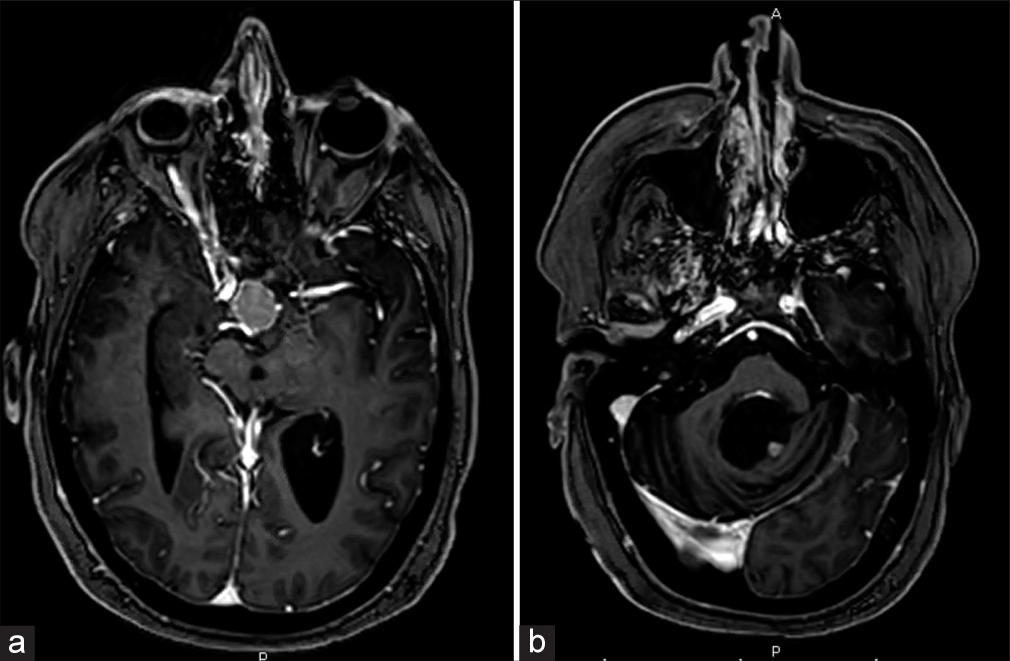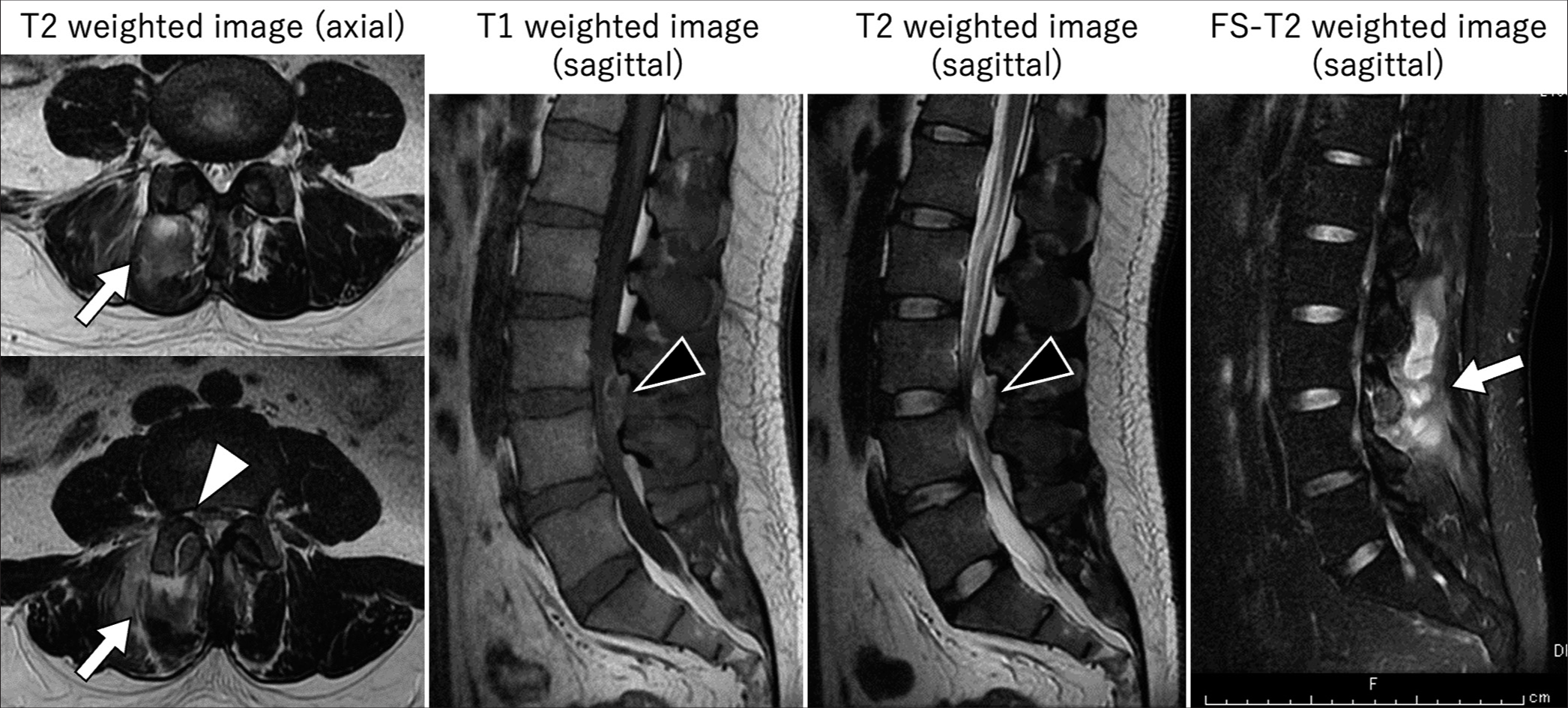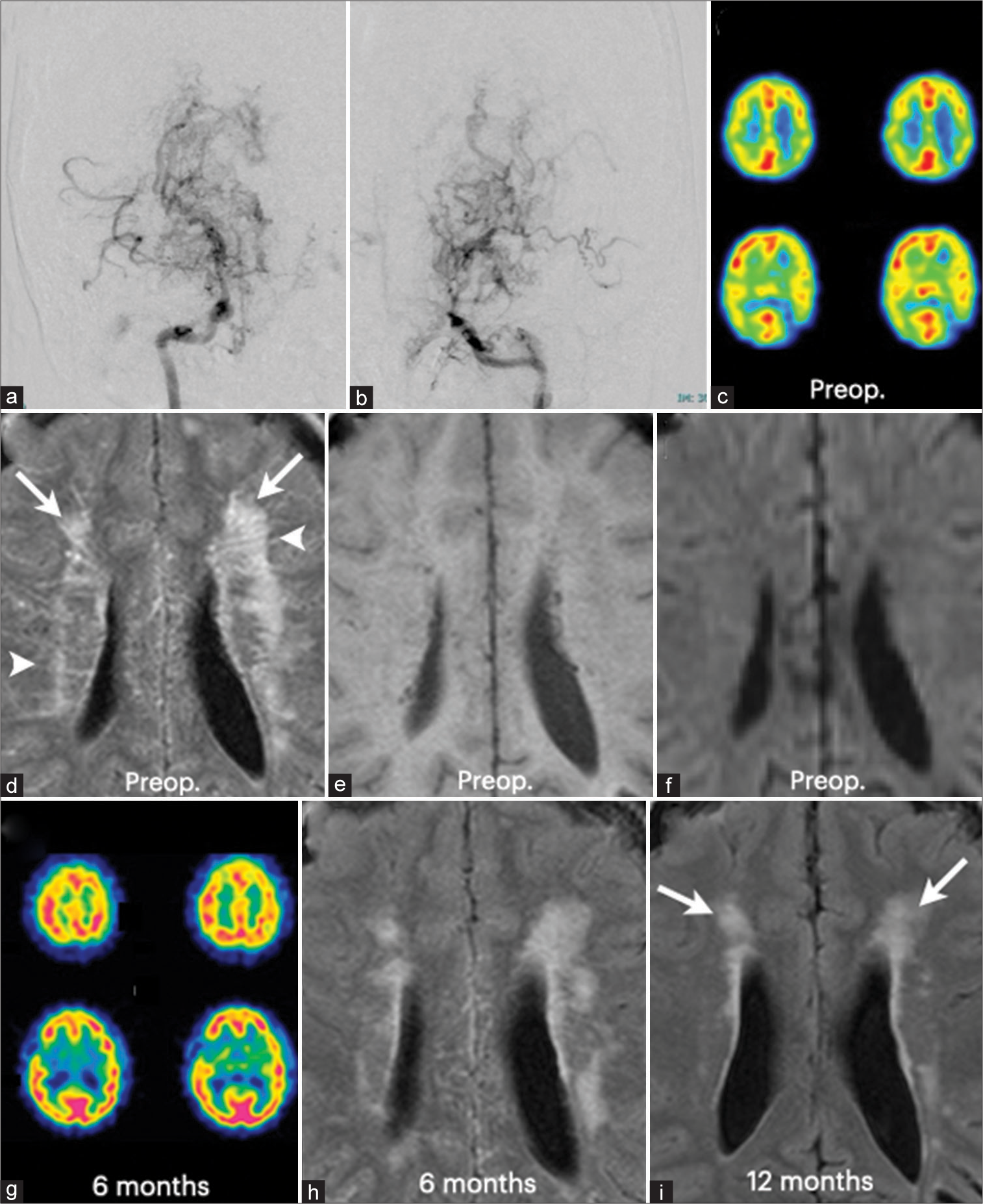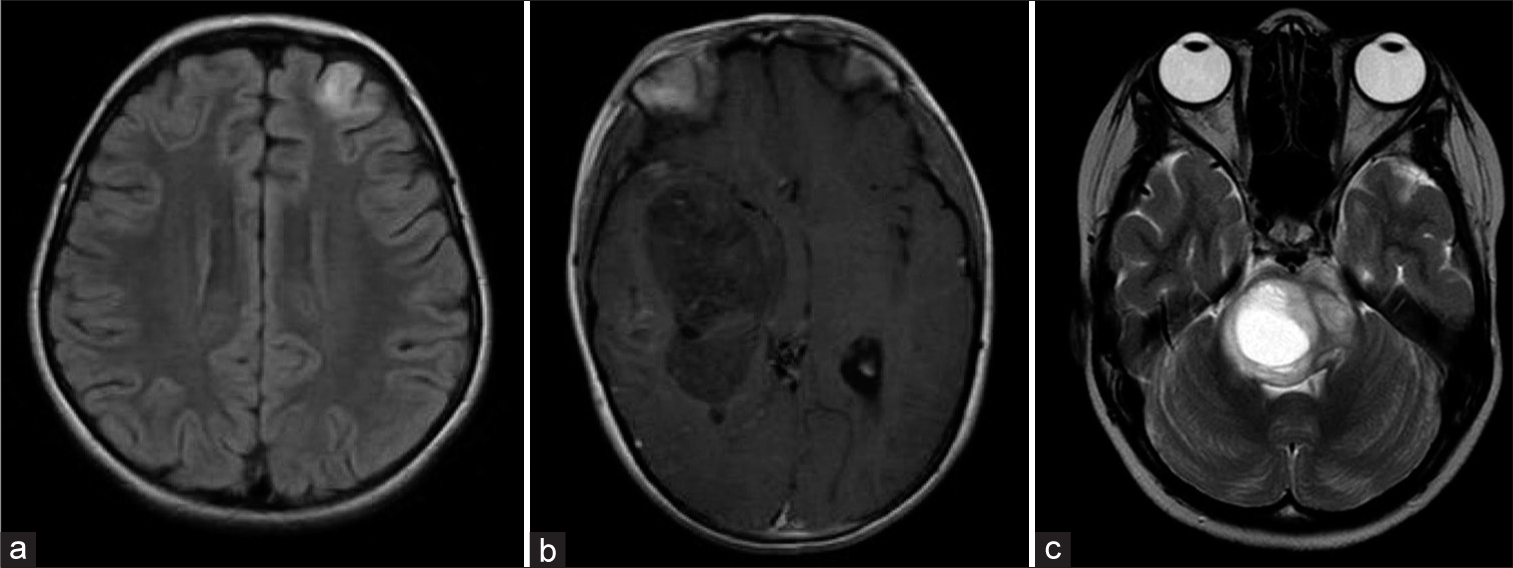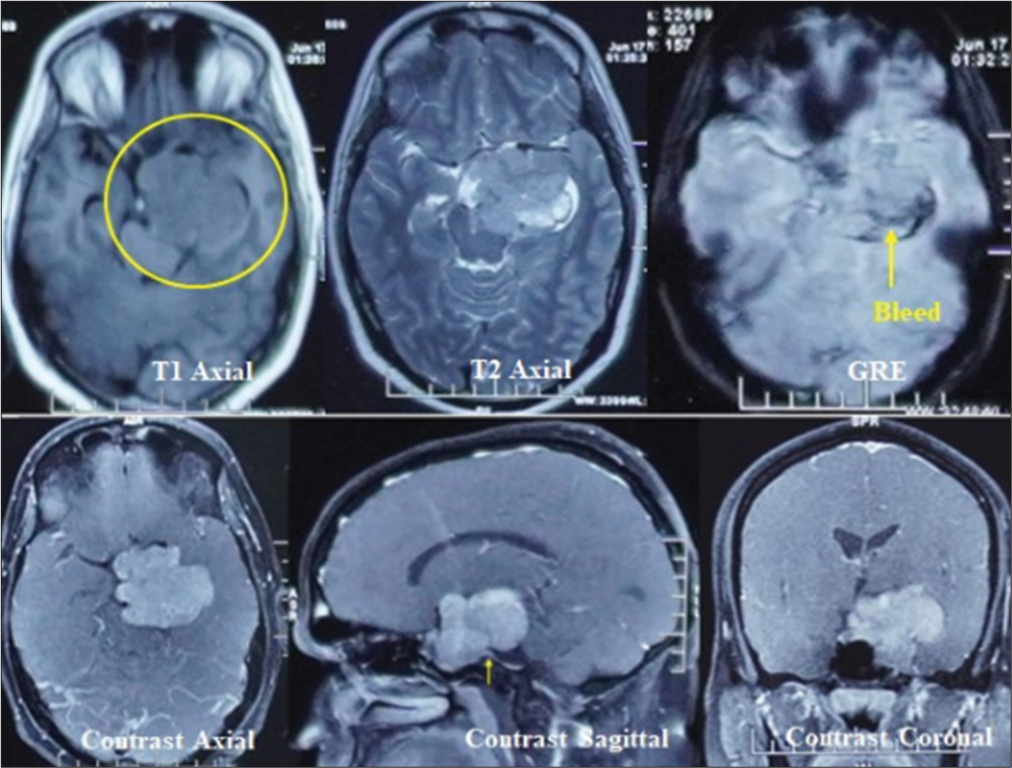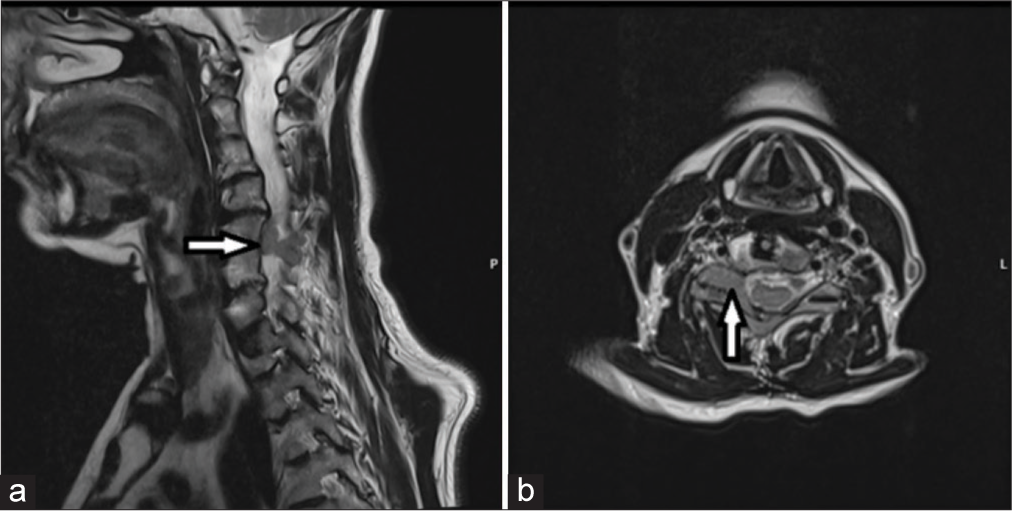Clavicular window for brachial plexus schwannoma removal
Date of publication: 19-Apr-2024
Background: Schwannomas are benign nerve sheath tumors that can either be sporadic or part of neurofibromatosis type 2 (NF2). Tumors of the brachial plexus (BP) with both supra- and infraclavicular components are uncommon and represent a challenge to complete surgical resection. There are few reports on single clavicular osteotomies for BP exposure; however, there are currently no reports of utilization of a clavicular window for a large schwannoma resection.
Symptomatic lumbar Tarlov cyst resolution after computed tomography-guided percutaneous trans-sacral fibrin glue intracystic injection: A case report and literature review
Date of publication: 19-Apr-2024
Background: Perineural Tarlov cysts are extrathecal cerebrospinal fluid-filled cavities in the perineural recesses around dorsal spinal nerve roots. They are mostly asymptomatic but may occasionally cause back pain, radiculopathy, neurological deficits, and idiopathic intracranial hypotension.
Three cases of kyphoplasty performed in the lateral position due to significant comorbidities
Date of publication: 19-Apr-2024
Background: More than 700,000 people suffer from vertebral compression fractures attributed to osteoporosis, metastatic disease, or trauma each year in the United States, and undergo kyphoplasty. They are typical. These often undergo kyphoplasty to treat resultant pain or new neurological deficits. Here, we present three patients who, due to significant comorbidities, underwent kyphoplasty performed in the lateral decubitus rather than the prone position.
Local compression of the sciatic nerve by a vascular malformation as a rare cause of sciatica: A case report and review of literature
Date of publication: 19-Apr-2024
Background: Sciatica is typically caused by disc herniations or spinal stenosis. Extraspinal compression of the sciatic nerve is less frequent.
Metastatic choroid plexus papilloma presenting as a sellar mass: A case report and literature review
Date of publication: 19-Apr-2024
Background: Choroid plexus papillomas (CPPs) are rare neoplasms arising from choroid plexus epithelium representing <1% of all intracranial tumors. Symptoms vary based on location and regional mass effect; however, hydrocephalus is common due to cerebrospinal fluid flow obstruction and/or overproduction. Distant site metastasis or de novo formation in extraventricular sites is rare.
Psoriasis vulgaris of the skin caused a L3-L4 lumbar epidural spinal abscess
Date of publication: 12-Apr-2024
Background: In a 31-year-old male, psoriasis vulgaris (PV) of the skin caused paraparesis attributed to a L3-L4 epidural spinal abscess that required emergent surgical decompression.
Resolution of white matter hyperintensity after surgical revascularization in moyamoya disease – A report of three cases
Date of publication: 12-Apr-2024
Background: Moyamoya disease often presents white matter hyperintensity (WMH) lesions on fluid-attenuated inversion recovery (FLAIR) images, which is generally accepted as irreversible. We, herein, describe three cases of moyamoya disease with WMH lesions that regressed or disappeared after surgical revascularization.
New CNS tumor classification: The importance in pediatric neurosurgical practice
Date of publication: 12-Apr-2024
Background: The management of the central nervous system (CNS) tumors in the pediatric population is crucial in neurosurgical practice. The World Health Organization (WHO) has evolved its classification of CNS tumors from the 19th century to the 5th edition, published in 2021, incorporating molecular advancements. This transition from morphology to molecular characterization is ongoing.
Medically responsive amyloidogenic giant sellar-parasellar prolactinoma
Date of publication: 12-Apr-2024
Background: Giant prolactinomas are rare; among them, the amyloidogenic variant, prolactinomas with extensive spherical amyloid deposits, are rare, with only 30 cases reported with recommendations of surgical management contrary to the routine prolactinoma’s medical management.
A rare presentation of leiomyosarcoma metastasis to the cervical spine: A case report and a brief review
Date of publication: 12-Apr-2024
Background: Leiomyosarcoma (LMS) is a rare malignancy that originates from smooth muscle. The most common sites of metastases include the lungs, liver, kidney, and skin. Notably, metastases of LMS to the central nervous system/or spine are extremely rare. When a cervical spinal LMS lesion was encountered, the patient successfully underwent gross total tumor resection with negative margins.


